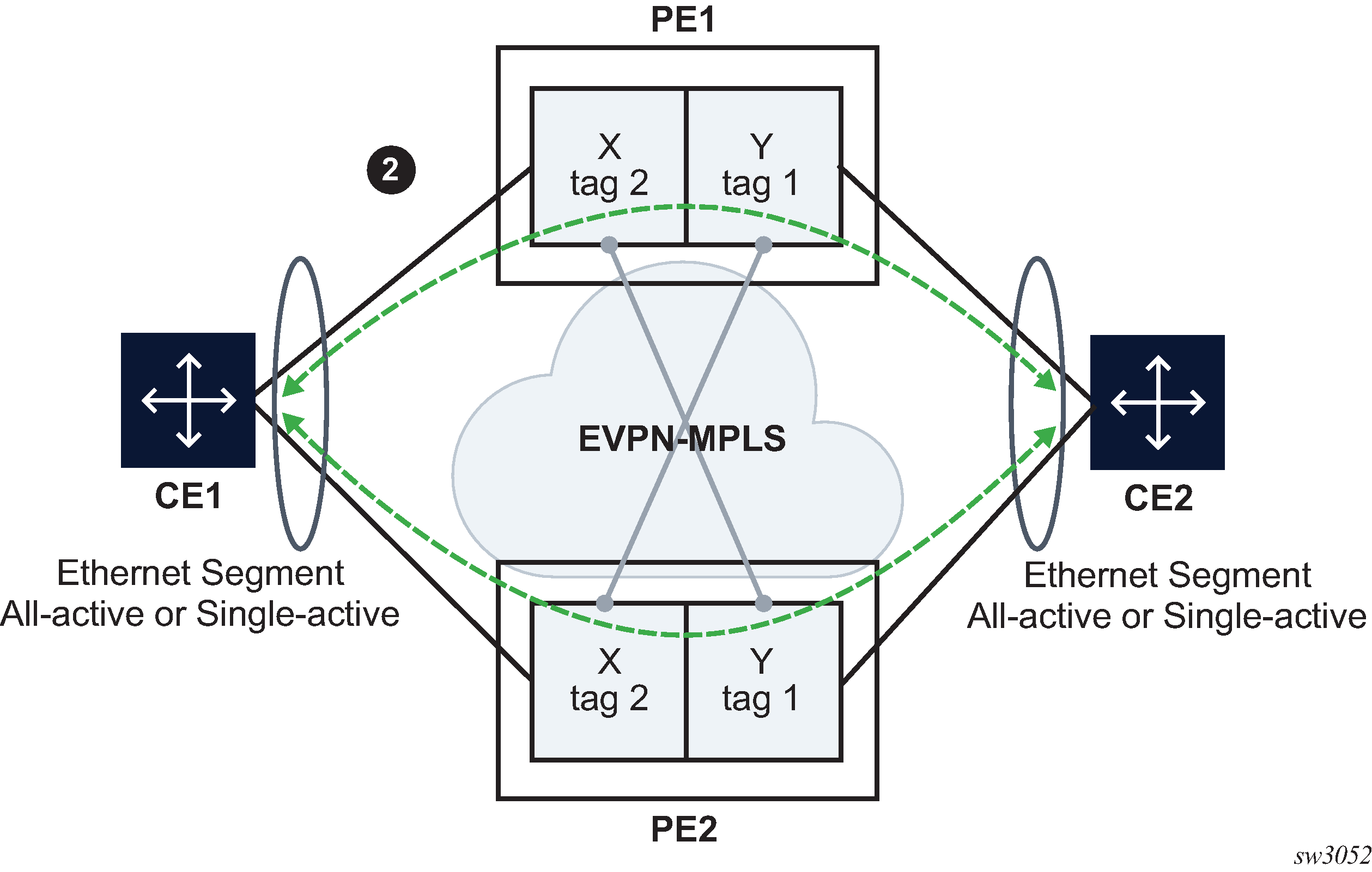Figure 1. EVPN-VPWS endpoints example-2

In Figure 1, PE1 is configured with the following Epipe services.
endpoint X create
exit
endpoint Y create
exit
bgp-evpn
evi 350
local-attachment-circuit "CE-1" endpoint "Y" create
eth-tag 1
exit
remote-attachment-circuit "ICB-1" endpoint "Y" create
eth-tag 2
exit
local-attachment-circuit "CE-2" endpoint "X" create
eth-tag 2
exit
remote-attachment-circuit "ICB-2" endpoint "X" create
eth-tag 1
exit
mpls bgp 1
auto-bind-tunnel
resolution any
exit
no shutdown
exit
exit
sap lag-1:1 endpoint X create
exit
sap lag-2:1 endpoint Y create
exit
In Figure 1, PE2 is configured with the following Epipe services.
endpoint X create
exit
endpoint Y create
exit
bgp-evpn
evi 350
local-attachment-circuit "CE-1" endpoint "Y" create
eth-tag 1
exit
remote-attachment-circuit "ICB-1" endpoint "Y" create
eth-tag 2
exit
local-attachment-circuit "CE-2" endpoint "X" create
eth-tag 2
exit
remote-attachment-circuit "ICB-2" endpoint "X" create
eth-tag 1
exit
mpls bgp 1
auto-bind-tunnel
resolution any
exit
no shutdown
exit
exit
sap lag-1:1 endpoint X create
exit
sap lag-2:1 endpoint Y create
exit
This example is similar to the Figure 1 example, except that the two PEs are multihomed to both CEs. In Figure 1, if CE2 goes down, then, no traffic exists between PEs because the two PEs lose all the objects in the endpoint connected to CE2. Traffic that arrives on EVPN is only forwarded to a SAP on a different endpoint.